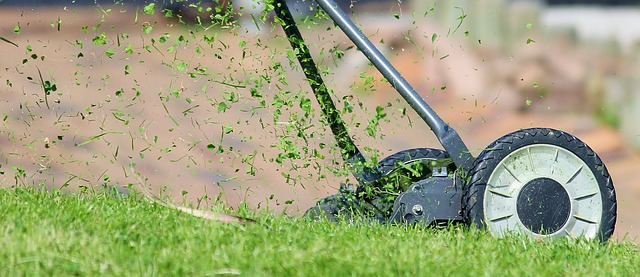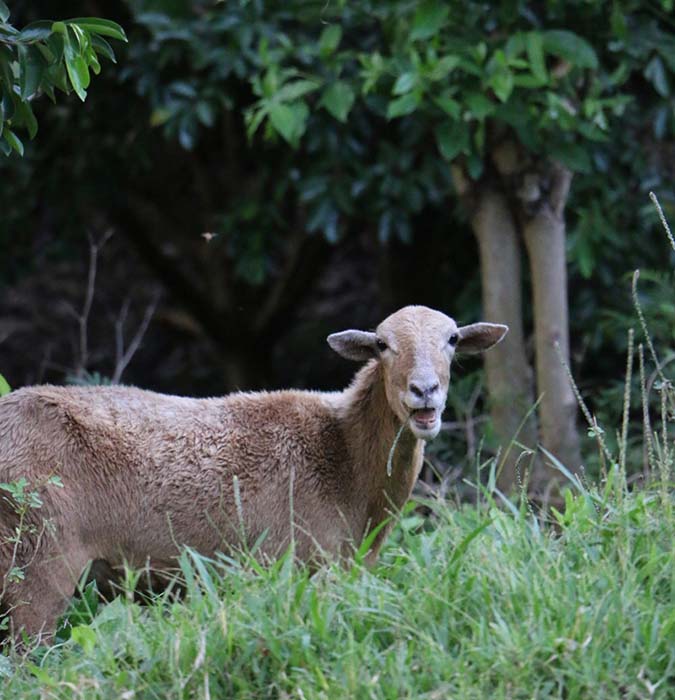Are you tired of cutting the grass?
I understand. It’s a lot of work—yet when you start considering the potential benefits of all that green growth, it makes the process much more tolerable.
Here in the tropics, we have huge grasses that grow like crazy during the rainy season. I’ve come up with some good uses for the stuff that have helped me to start enjoying having to cut it.
Here’s a video where I cut a long path leading down to the river and share why grass is great:
Seriously, that video is worth watching just for the stupid song!
I know in the past I’ve urged people to tear out their lawns and plant trees and gardens instead—yet if you’re stuck with grass, you might as well use it.
Grass Is the Green Activator
Add freshly cut grass to the compost pile, and it will kick your composting into high gear.
Even if you leave a pile of grass on the ground, it will get white and hot inside, often within hours of cutting.
Microorganisms love to eat grass clippings.
Grass Is Full of Good Stuff
In the JADAM method, a.k.a. Korean Natural Farming, wild grasses are a common ingredient in the anaerobic compost teas used to feed crops.
Grass is good at getting nutrition from the soil. Cut it down and use it in the compost or in “teas,” and you’ll take the product of the grass’s hard work and give it to your vegetables and fruits.
Grass Is Good Mulch
My Dad used to use grass for mulch regularly.
He’d mow his St. Augustine grass lawn with a bag on the mower, then empty the bag of grass clippings into the food forest and various beds around the back and sides of the house.
As the grass clippings rot, they feed the soil—even while acting as a ground-cooling mulch.
Grass Is Good for Animals
Joel Salatin of Polyface Farms calls himself a “grass farmer,” even though he’s known better for his chickens, cows, pigs, and other meat animals.
Why?
Because the grass underpins everything else. Without healthy grass, you don’t get healthy animals.
Grass can be transformed into steaks and mutton.
Chickens will also eat grass as part of their diet.
Plus, you can cut and dry grass and use it for feed and bedding in your coops and pens.
Conclusion
Though I’ve talked disparagingly about lawns in the past, there is a place for grass. It’s a renewable resource for your farm or homestead, with multiple applications. If you’ve got an area which isn’t used for growing food, letting it grow some grass you can harvest for other applications isn’t a terrible thing. I may prefer forest, but there are places—like the path I string trim in my video—where grass makes sense.
Let it get some height and cut before seed heads form, if possible, then feed it to something that produces food … even if that something is your compost!
David The Good is a Grow Network Change Maker, a gardening expert, and the author of five books you can find on Amazon: Compost Everything: The Good Guide to Extreme Composting, Grow or Die: The Good Guide to Survival Gardening, Totally Crazy Easy Florida Gardening, Create Your Own Florida Food Forest, and Push the Zone: The Good Guide to Growing Tropical Plants Beyond the Tropics. Find fresh gardening inspiration at his website TheSurvivalGardener.com and be sure to follow his popular YouTube channel.










COMMENTS(3)
Okay. You’ve sold me on the compost thing. But it’s going to be hard to fully get over my grass prejudice.
I love the saying “all flesh is grass” – it’s so true.
I also love the idea of ‘random acts of mowing” which I do. It encourages all different kinds of species chances to grow.
Cool stuff David!
I just love letting my grass grow & grow!! The neighbors just can’t stand it . But I used it as mulch, poultry & pet bedding all last winter. Then I recycled that into my compost pile for gardening this spring. I have a new fresh cut area to gather for composting & whatever I can think of.